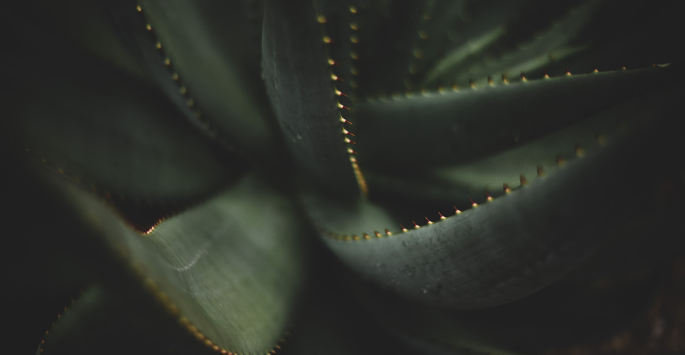
You’ve just spent the day outside enjoying some sunny weather and getting your dose of vitamin D. And whoops, you might’ve gotten a little too much because now your skin is pink and tender to the touch. What’s the first thing you reach for? Your aloe vera gel or lotion, of course.
We’ve all been taught from an early age that aloe is the best way to treat a sunburn, and generally we agree with this advice! It’s incredibly soothing and cooling, and delivers healing moisture to UV-compromised skin. As far as natural healers go, this one is high on the list of favorites among dermatologists around the world.
But did you know that sunburns aren’t the only time you can (and should) be using aloe vera?
Aloe comes from a succulent known as the aloe vera plant, and many of us have them growing in pots around our home or in our yard. It’s a relatively common and resilient plant with the right care, so having aloe on hand every day is as easy as snipping off one of the fat, fleshy leaves and cutting it open to secrete the gel inside. It’s perfectly safe to apply it right on your skin after it comes out, but if you aren’t much of a gardener you can find it in a lot of skincare products, in gel or lotion form.
Part of what makes aloe so beneficial for your skin (whether it’s sunburnt or not) is the sheer amount of nutrients and vitamins you can find in this ingredient. Aloe contains vitamins A, B12, C, and E, making it a potent antioxidant. This can be especially beneficial when applied before going out in the sun, not after, offering your skin the chance to avoid ever getting damage instead of simply healing it once it has been burnt.
Aloe is also useful in rashes, other types of burns, and wounds. It can be soothing and beneficial to people suffering with eczema or psoriasis, two skin conditions known for their inflaming reactions. Aloe can aid in skin cell regeneration, helping you recover from ailments like this quickly.
And what if you don’t have any skin conditions? Aloe is still going to be beneficial. You don’t have to wait to have a sun burn just to enjoy aloe—its non-greasy consistency paired with its ultra hydrating moisturizing properties make it a great moisturizer for aging skin. That’s why it is commonly found in many anti-aging products. And like any powerhouse anti-aging ingredient, aloe helps with collagen production, reducing wrinkles and fine lines.
CAN ANYONE USE IT?
Yes, this is a resounding yes. We love ingredients that are compatible with all skin types and aloe is no exception. Sometimes, acne-prone skin can struggle under certain moisturizers and end up with more breakouts from clogged pores, but not with aloe. It is one of the most non-comedogenic ingredients you can apply to your skin and can help your skin heal from an active breakout.
WHERE CAN I FIND ALOE VERA?
If you don’t have a plant that produces it, you can purchase aloe vera gel or incorporate it into your daily skincaer products to prevent discomfort before it happens. Aloe vera gels can be found in numerous skincare products including Aloe Cort Cream, Purely Physical Sunscreen Spray SPF 50, Papaya Enzyme Cleanser, Purifying Cleanser, Natural Pigment Corrector, Acne Correction Pads, and even the Hair Regrowth System, which can be extremely beneficial for anyone using minoxidil and experiencing some mild itching with it.
If you want to learn more about what's in your skincare products, contact us at info@supriyamd.com or call our office at 561-805-9399 to book an appointment with us.
